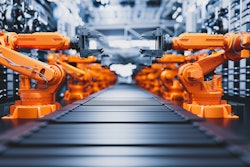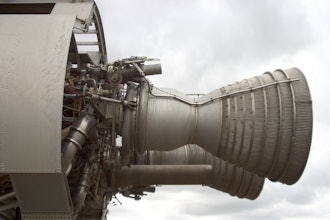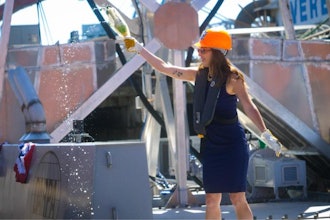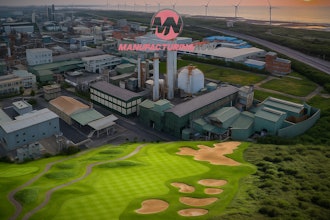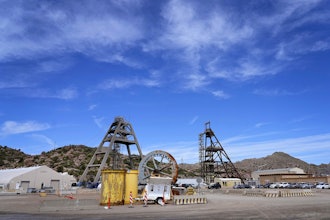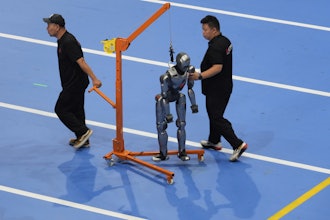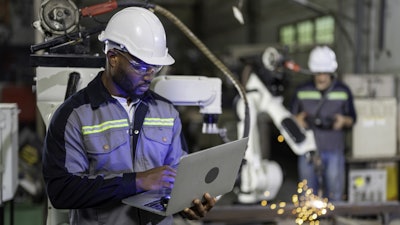
Manufacturing is receiving considerable attention lately, particularly in the United States. Our concept of prosperity and cultural identity is closely tied to this age-old industry. And why wouldn't it? From lightbulbs, televisions, transistors, airplanes, vaccines, the internet, to personal computers – we have dreamt up and built some of the most advanced machines and products that have changed the trajectory of human history. We were able to achieve this manufacturing prowess because we perfected the trifecta: technology & innovation, an uninterrupted supply chain, and labor, all working in tandem.
But in the decades since, our focus shifted away from manufacturing, and the delicate trifecta has fallen out of balance. Today, technology has advanced to such an extent that it has overshadowed the latter two. Supply chains are globalized and dependent on technology. Labor is uncertain due to technological advancements. This is going to be a defining moment for the whole industry. "Industry 4.0", where automation, artificial intelligence (AI) and advanced robotics, not merely assembly lines, will be the center of the production landscape. As American manufacturing experiences a resurgence, we must ask: What does it mean to work in a world reshaped by machines? Are we creating jobs that are ready for the future?
Today, domestic manufacturing employs 13 million workers who earn an average annual salary of $102,629. It drives 52.9% of private-sector R&D and contributes $2.64 to the economy for every dollar invested. By 2033, the industry is projected to require 3.8 million new jobs. However, beneath these promising statistics, a more complex picture emerges.
These jobs will be the domain of highly skilled workers, including engineers, technicians, software developers, robotics specialists, and others. Robots will replace the factory roles that are repetitive, manual, and task-based. China, the emerging manufacturing power, is operating so-called "dark factories" which are fully automated facilities that function through AI and robots with minimal human intervention.
As daunting as this moment may be, it is also an opportunity to rethink our broader workforce strategy, refining our talent and developing knowledge and skill sets that are relevant for this age, not the past. We need to create high-value, technology-driven jobs that will require human ingenuity and creative judgement. Here are five key roles leading this transformation.
1. Robot Wrangler
Robot wranglers are the front-line soldiers of the manufacturing future. The level of technical experience for this emerging field may vary depending on their "flock", but they are likely to be tasked with the troubleshooting, maintenance, and optimization of robots in their given environment.
Whether it's sorting packages, moving freight, or welding steel, no matter how skilled and efficient robots become at their given specialty, they still encounter unseen issues and glitches, especially as they navigate through an imperfect environment. At the Tesla Gigafactory, for example, the robot wranglers manage a mini army of robo-workers as they conduct work in battery assembly, sensor maintenance, and other tasks throughout their 10 million square-foot facility.
This job requires a broad range of knowledge in fields such as automation, AI, general robotics, and mechanical maintenance. According to one source, robots in automotive manufacturing are expected to reach the six-figure mark in as little as four to five years. No matter how advanced these machines become, they'll still require the assistance of a Wrangler to ensure things stay smooth, safe, and productive.
2. AI Systems Integrator
As intelligent as AI may be, it requires a significant amount of human intelligence to get it up and running. That's where AI Systems Integrators come in. They serve as the architect between the various AI systems, including IoT (Internet of Things) sensors, digital twins, and multiple AI tools. Putting all this together makes it possible to create the smart factories of the future. Not only do they connect these different systems, but they also work to ensure that each one works together smoothly.
In a partnership between IBM and Boston Dynamics, these companies analyzed various forms of data from around the facility to improve the workflow. In the process, they also set up a dedicated digital twin to predict equipment failures and implement cybersecurity protective measures. Similar smart factories are on the rise nationwide, growing at a rate of over 50% annually, according to a recent McKinsey study. Like a car and a mechanic, these cannot operate without the help of an AI Systems Integrator.
3. The Operational Planning Specialists
If the production floor were an orchestra, the operational planner would be the conductor. They are the inter-departmental coordinators who unite even the most disparate departments within a company – business vision, strategy, production, procurement, supply chain, quality, and more. Now, this role is shifting to become more tech-savvy, and the tools of trade reflect this change. By using AI systems, their role is evolving from forecasting to scenario modeling and simulations. They can break big objectives down into manageable tasks, setting deadlines, milestones, and priorities, and seeing them through from tip to tail. They can predict the "best case scenarios" and "worst case scenarios" and come up with possible solutions. What if a key supplier fails?
The role is still about connecting high-level strategy with day-to-day work. With all the moving parts involved and the level of human interaction inherently required, this is a problematic position for AI to interrupt.
4. Industrial Maintenance Technicians
As long as machines exist, there will be a need for technicians to perform maintenance and repair work. The only difference is that, instead of just conveyors or mechanical systems, they'll be troubleshooting robotics arms, AGVs, and possibly even collaborative robots (cobots). And, of course, instead of reactive repairs or scheduled maintenance, they'll be working with AI models and sensor data from digital twins to predict failures even before they occur.
Currently, machine downtime adds up to over $50 billion annually. As we move toward creating smart factories with advanced robots and equipment, the role of a maintenance technician will become increasingly critical. At General Electric's wind turbine plants, they are already using predictive maintenance software to diagnose issues with robots, replace faulty parts, and adjust IoT sensors for digital twins. We will need more technicians like this if we are to compete with China's automated facilities.
5. Quality Control Inspectors
One of the biggest challenges in traditional manufacturing is quality control, as it can only be achieved at the end of the production line. It is also very manual and relies on random spot checks. But this is an easy enough problem to solve in smart factories where data can flow seamlessly between machines, systems, and people. Quality control will be integrated at every stage of the production process, enhancing efficiency, minimizing waste, and increasing production value.
As smart factories become more prevalent, the role of a quality inspector shifts towards a more data-driven, problem-solving approach. They will need to combine human judgment with AI analytics to ensure product quality in automated environments. They will need to collaborate and work with engineers and AI system integrators to resolve root problems, continuously train AI models to improve accuracy and ensure compliance. In essence, they will provide much-needed human oversight in the world of machines.
Managing Change with People and Culture
Manufacturing is more than just an industry or an economic engine for us Americans. It is a cultural cornerstone rooted in the grit and pride of American workers. It has shaped communities from the Rust Belt to the Sun Belt. As manufacturing becomes increasingly AI-driven, it is our responsibility to preserve the soul of this industry – its workers.
At Siemens, traditional assemblers are now training as Industrial Maintenance Technicians, mastering predictive maintenance tools, while Toyota's humanoid robot pilots are engaging workers to build trust. We should examine global vocational models like these to invest in our workforce development and make training more accessible. If we can foster lifelong learning and celebrate workers' adaptability, we can empower a workforce that honors and carries on the heritage of American industry.
Joy Taylor is the managing director of consulting at alliantgroup, a consulting and management engineering firm. Myron Moser is a strategic advisory board member at alliantgroup and chairman emeritus of Hartfiel Automation.






